“Global Bring Your Own Device Market to reach a market value of USD 639.7 Billion by 2031 growing at a CAGR of 14.4%”
The Global Bring Your Own Device Market size is expected to reach $639.7 billion by 2031, rising at a market growth of 14.4% CAGR during the forecast period.
As the Asia Pacific region experiences significant economic growth, businesses increasingly adopt BYOD policies to improve employee flexibility and productivity. In particular, the IT, manufacturing, and service sectors have embraced BYOD to support mobile workforces and enhance operational efficiency. Consequently, the Asia Pacific region would acquire nearly 30% of the total market share by 2031.
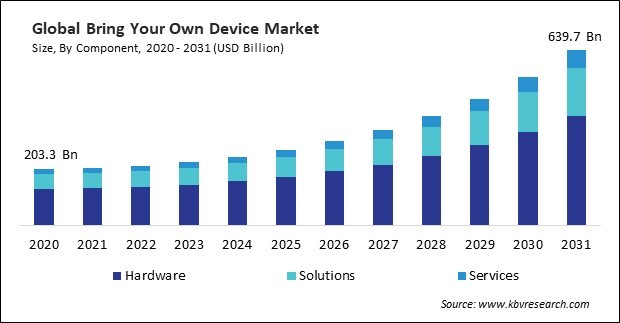
The major strategies followed by the market participants are Partnerships as the key developmental strategy to keep pace with the changing demands of end users. For instance, in March, 2024, Jabra is advancing the Microsoft Teams BYOD experience by incorporating intelligent speakers such as the PanaCast 50 into BYOD meeting rooms, enhancing meeting transcripts and productivity tools. Furthermore, the Microsoft Teams Pro Management Portal will provide IT administrators with comprehensive insights into BYOD room usage. Moreover, in January, 2024, Kasm Technologies has announced that its digital workspace solution, Workspaces for Oracle, has attained Powered by Oracle Cloud Expertise status and is now featured on the Oracle Cloud Marketplace. This collaboration enhances cloud-enabled workspace solutions to better address critical business needs.
Based on the Analysis presented in the KBV Cardinal matrix; Microsoft Corporation is the forerunners in the Market. In May, 2024, RSA Security LLC, is strengthening Microsoft environments through its External Authentication Methods (EAM) feature, which extends RSA's authentication an Companies such as Cisco Systems, Inc., Broadcom, Inc., and IBM Corporation are some of the key innovators in the Market. d access solutions. This integration, featuring RSA® ID Plus, enhances security and flexibility in protecting Microsoft Office environments from phishing threats.
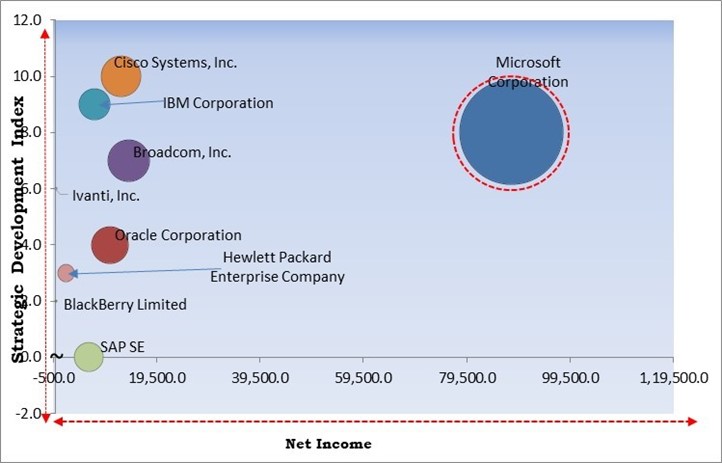
In recent years, the penetration of mobile devices has grown rapidly, providing employees with access to increasingly advanced personal devices that can easily handle work-related tasks. Mobile devices' growing user-friendliness and power have made it easier for employees to integrate personal devices into their work routines. Hence, with such widespread mobile connectivity and ownership, businesses are finding it increasingly practical to enable BYOD as part of their digital strategies.
Cloud computing solutions enable employees to securely access company data and applications from virtually any device with an internet connection, revolutionizing traditional work models and supporting a more mobile, decentralized workforce. With more sophisticated cloud services, employees can now use their devices to access work-related tools and applications. Thus, integrating cloud technology with BYOD practices has resulted in widespread adoption across industries.
The risk of security lapses is heightened by the permission granted to employees to access corporate networks and sensitive data from personal devices, as these devices frequently lack standardized security protocols on company-issued hardware. Cyberattacks on personal devices are becoming more sophisticated, and employees' devices can serve as an entry point for malware and phishing attacks. Cyberattacks on personal devices are becoming more sophisticated, and employees' devices can serve as an entry point for malware and phishing attacks.
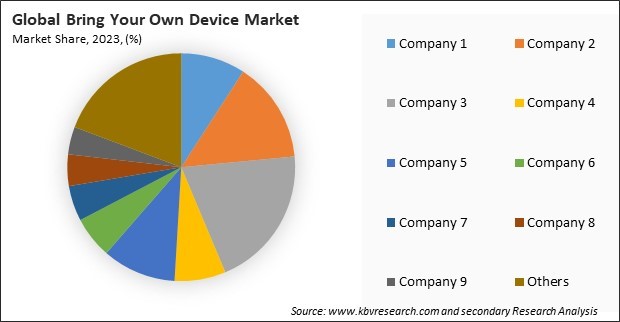
The leading players in the market are competing with diverse innovative offerings to remain competitive in the market. The above illustration shows the percentage of revenue shared by some of the leading companies in the market. The leading players of the market are adopting various strategies in order to cater demand coming from the different industries. The key developmental strategies in the market are Partnerships & Collaborations.
By industry, the market is segmented into retail, healthcare, IT, energy & utility, automotive, and others. The retail segment garnered 16% revenue share in the market in 2023. Retail businesses, particularly those focused on enhancing customer service and operational efficiency, have increasingly adopted BYOD policies to empower employees with real-time access to inventory, sales data, and customer information.
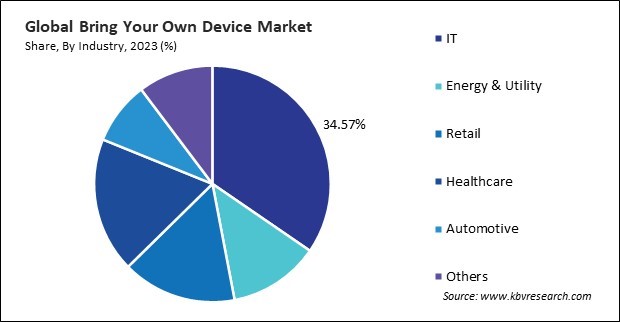
Based on organization size, the market is bifurcated into mid-to-large-sized businesses and small businesses. The small businesses segment procured 28% revenue share in the market in 2023. Small businesses continue to adopt BYOD practices due to cost efficiencies, as allowing employees to use their own devices eliminates the need for companies to purchase hardware.
On the basis of component, the market is classified into hardware, solutions, and services. The solutions segment recorded 26% revenue share in the market in 2023. Solutions like mobile device management (MDM), mobile application management (MAM), and endpoint detection and response (EDR) are critical for ensuring that employee devices comply with corporate security policies and can securely access company networks.
Free Valuable Insights: Global Bring Your Own Device Market size to reach USD 639.7 Billion by 2031
Region-wise, the market is analyzed across North America, Europe, Asia Pacific, and LAMEA. The North America segment procured 38% revenue share in the market in 2023. North America's leadership in the market is largely driven by the region's advanced IT infrastructure, widespread adoption of cloud computing, and a robust focus on cybersecurity.
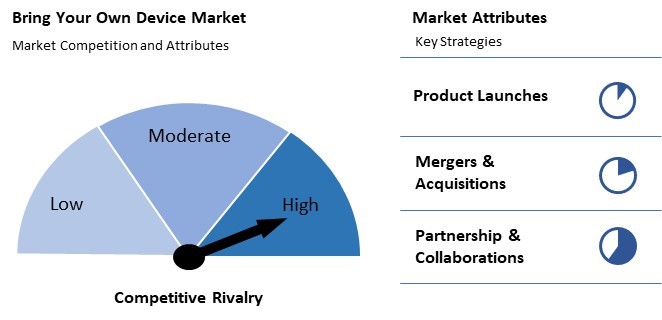
The competition in the BYOD market is intense, driven by the growing demand for flexible work environments. Major players offer comprehensive solutions focusing on security, device management, and user experience. Companies constantly innovate to provide seamless integration, secure access, and enhanced productivity in the workplace.
| Report Attribute | Details |
|---|---|
| Market size value in 2023 | USD 228.9 Billion |
| Market size forecast in 2031 | USD 639.7 Billion |
| Base Year | 2023 |
| Historical Period | 2020 to 2022 |
| Forecast Period | 2024 to 2031 |
| Revenue Growth Rate | CAGR of 14.4% from 2024 to 2031 |
| Number of Pages | 460 |
| Number of Tables | 764 |
| Report coverage | Market Trends, Revenue Estimation and Forecast, Segmentation Analysis, Regional and Country Breakdown, Competitive Landscape, Market Share Analysis, Porter’s 5 Forces Analysis, Company Profiling, Companies Strategic Developments, SWOT Analysis, Winning Imperatives |
| Segments covered | Component, Organization Size, Industry, Region |
| Country scope |
|
| Companies Included | Broadcom, Inc., IBM Corporation, Microsoft Corporation, Oracle Corporation, Citrix Systems, Inc. (Cloud Software Group, Inc.), Cisco Systems, Inc., Ivanti, Inc. (Clearlake Capital Group, L.P.), HP, Inc., BlackBerry Limited, SAP SE and HCL Technologies Ltd. |
By Organization Size
By Component
By Industry
By Geography
The Market size is projected to reach USD 639.7 Billion by 2031.
Rising mobile device penetration are driving the Market in coming years, however, Substantial concerns regarding data security restraints the growth of the Market.
Broadcom, Inc., IBM Corporation, Microsoft Corporation, Oracle Corporation, Citrix Systems, Inc. (Cloud Software Group, Inc.), Cisco Systems, Inc., Ivanti, Inc. (Clearlake Capital Group, L.P.), HP, Inc., BlackBerry Limited, SAP SE and HCL Technologies Ltd.
The expected CAGR of this Market is 14.4% from 2024 to 2031.
The Hardware segment led the Market by Component in 2023; thereby, achieving a market value of $399.7 billion by 2031.
The North America region dominated the Market by Region in 2023, and would continue to be a dominant market till 2031; thereby, achieving a market value of $227.9 billion by 2031.
Our team of dedicated experts can provide you with attractive expansion opportunities for your business.
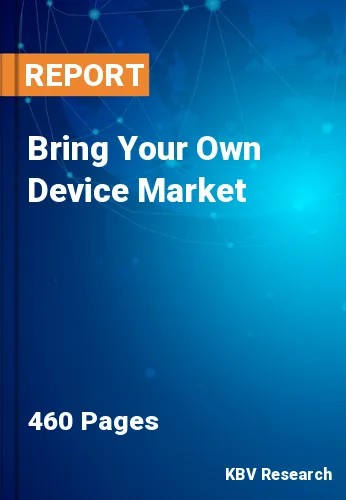
 Drivers
Drivers
 Restraints
Restraints
 Opportunities
Opportunities
 Challenges
Challenges
